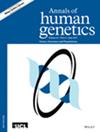Iran, a country in the Middle East, has several ethnic and ethno-religious groups and needs its own ethnic-specific databases for the forensic statistical parameters and allele frequency of STR markers.
We have investigated 600 unrelated Turk individuals from four northwestern provinces of Iran using the Identifiler™ system (TPOX, FGA, vWA, TH01, CSF1PO, D2S1338, D3S1358, D5S818, D7S820, D8S1179, D13S317, D16S539, D18S51, D19S433, and D21S11). Furthermore, STR allelic frequencies were compared to previously population-based data.
After Bonferroni correction, deviation from Hardy-Weinberg equilibrium (HWE) was observed in the FGA, TPOX, VWA, and D19S433 loci (P value < 0.05). The combined power of discrimination (CPD) and exclusion (CPE) values for all 15 STR loci were 0.9999999999999999999984 and 0.9999999, respectively. In comparison with Azerbaijani and Turkish populations, there were no significant differences on all STR markers. However, in the Chinese Han population, differences at 13 STR loci were detected. Additionally, comparisons of Fischer genetic distance indices (FST) P-values did not reveal any statistically significant difference between Northwestern Iran, Azerbaijan and Iran (Fars) populations. PCA and PCoA analyses showed that our population was grouped with different populations in different quarters, showing a positive and negative correlation, respectively. In the NJ and UPGMA phylogenetic trees, Iranian populations were grouped together. These results demonstrated that the given set of STR markers can be confidently used for all identification tests in Northwestern Iran.


